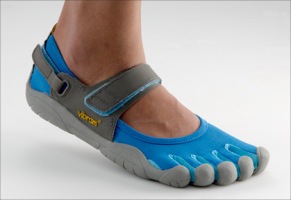 January is the prime time for fitness fads as people resolve to get in better shape and lose weight for the year ahead. The latest fad for runners? Barefoot running, a fitness style that lets your body adapt to your natural gait instead of conforming to your running shoes.
January is the prime time for fitness fads as people resolve to get in better shape and lose weight for the year ahead. The latest fad for runners? Barefoot running, a fitness style that lets your body adapt to your natural gait instead of conforming to your running shoes.
Barefoot running shoes have been gaining popularity in recent months, as they are designed to re-create a the natural sensation of running “barefoot” on man-made surfaces like concrete and asphalt.
The Pros:
Robert A. Kornfeld, Founder of the Institute for Integrative Podiatric Medicine, wrote for the Huffington Post that barefoot running shoe manufacturers believe that “the human foot, unimpeded by synthetic surfaces and restrictive running shoes, should function at its best.”
While people have been wearing cushioned sneakers to exercise for years, it’s no secret that the human foot was created long before shoes as we know them. Uneven, grassy surfaces can help the human body navigate and respond to uneven terrain, absorb shock and propel the body forward.
The Cons:
“Choosing to run on non-yielding surfaces without the protection afforded by proper running shoes can be harmful to the foot and ankle and cause even more problems downstream from compensation patterns,” Dr. Kornfeld wrote at the Huffington Post.
While barefoot running shoes certainly have some benefits, they also offer potential injury risks to foot muscles and tendons, the most common being damage to a part of your foot known as the first metatarsal. Because they can cause issues including tendinitis, plantar fasciitis, stress fractures, knee, hip and back problems, very few people should use barefoot running shoes.
Who Should Wear Barefoot Running Shoes?
Serious runners with stable foot structure and powerful lower-leg muscles can consider wearing barefoot running shoes. Before beginning barefoot running or purchasing special shoes, talk to your podiatrist who can advise you how to use them properly to avoid long-term injury.
